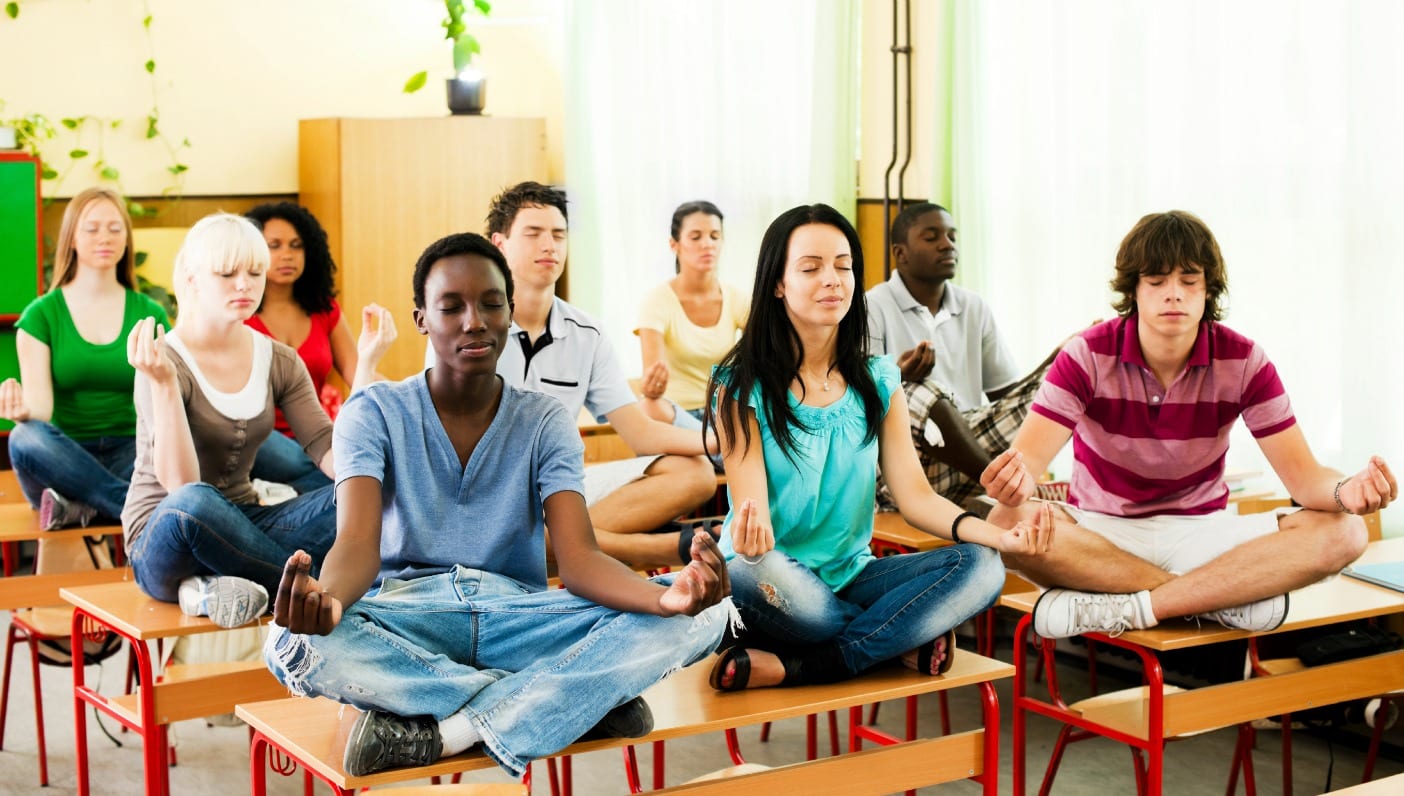
Why Meditate? Join Wanderlust Hollywood and leaders of the meditation community for an immersion into the science, techniques, benefits, and practical application of meditation. Not in LA? Buy tickets for the livestream and learn from the comfort of home. Conference speakers include Mallika Chopra, Moby, Ariel Garten, Light Watkins, Jim Gimian, and Scott Schwenk, among others. Click here for more information, or purchase tickets here.
Teenage daydreams are part of growing up, but these days our youth are more prone to distractions than ever before. Young people today are digital wizards—their handheld devices practically capable of magic—which is a far cry from those clunky Macintosh desktops of the mid-1980s. Remember The Oregon Trail?
While it’s evident that advancements in technology have done wonders for our youth’s efficiency, like adults, it’s also proved as a pesky diversion for completing the task at hand. But a new study has found that young adults who practiced mindfulness meditation reported improved cognitive function like memory and concentration, offering a holistic solution.
Put simply, distraction is a loss of awareness from the present moment—a loss in memory (however slight) from that moment. If meditation has proved highly effective on modern adults, then why wouldn’t the practice offer our young people the same results?
Kristen Jastrowski Mano, a psychologist at the University of Cincinnati in Ohio, conducted her research at a junior high school in San Diego, Calif., where she and her colleagues studied 172 students ranging from 12 to 15 years old. The students were broken into three groups—one which practiced mindfulness meditation, another yoga, and the third was placed on a wait list as a control group. The findings were published November 11 in the Journal of Adolescent Health.
Jastrowski chose to compare the effects of yoga vs. meditation, since the focused attention required in each modality is different—one involving mind and body; the other solely the mind. The students in all three groups completed questionnaires prior to the study to indicate their awareness of their own thoughts—their level of mindfulness. They were also given simple assignments to test their memory.
Student Science has more on the study:
The mindfulness group then met with meditation instructors during their physical education (PE) class. Over four weeks, they learned different types of mindfulness meditation. They were also given a CD so they could meditate at home. The yoga group also met during PE. Over the same four weeks, they learned to do certain yoga poses. The scientists selected poses that required students to pay attention to their posture and position. That made yoga a different type of mindful activity. Wait-listed students attended their regular PE class.
At the end of the four weeks, all of the students completed the questionnaires and memory tests a second time. The researchers then compared those scores to the earlier ones.
Students given the meditation training performed much better on the memory tasks. They jumped 10 points (from 34 to 44) on a 75-point scale of working memory. The yoga group improved only four points. The control group showed no improvement.
By now we’re all aware of the powerful benefits of a regular meditation practice for adults—namely, the effect it has on rebuilding gray matter in the brain. ABC News correspondent Dan Harris, once an anxiety-riddled newsman, now turned mindful meditator, reported earlier this year that practice had already become popular among teens. He’s currently one of meditation’s biggest proponents in the mass media arena.
In an interview with Elisha Goldstein, a psychologist and author of “Uncovering Happiness,” Harris found that among teens, a regular meditation practice can improve test scores and memory function, and help them be less distracted.
Read the full story on ABC News:
Since teenagers have shorter attention spans than adults, Goldstein and his wife often incorporate playful activities, such as hiking or music, into the program.
Because a teen’s brain undergoes important transformations, meditation can lay the groundwork for a lifetime of improved resilience and focus, Goldstein said. The benefits are especially important in an era when teenagers’ attention spans are so fractured by digital devices.
“So there’s this incredible opportunity to lay the foundation to experience a sense of personal control, so you cultivate a sense of emotional intelligence and to learn how to connect with people in meaningful ways and that lays the foundation for the adult years that follow,” he said.
Many schools have already incorporated mindfulness meditation programs into their repertoire, but if yours isn’t on the list, you can always meditate with your teen at home. Or if you’d rather encourage a solo practice, here’s a list of short guided meditations designed especially for teenagers.
What do you think—will you encourage your teen to meditate?
Photo via iStock
—
 Andrea Rice is the Practice and Community Editor for Wanderlust Media. She is also a writer and yoga teacher. Her work has also appeared in The New York Times, Yoga Journal, mindbodygreen, and a variety of online magazines. Her teaching style is a blend of her love for music and intuitive movement, with emphasis on core strength. You can find her regular classes at shambhala yoga & dance center in Brooklyn, and often as a guest teacher for Deep House Yoga. Connect with Andrea on Instagram and Twitter.
Andrea Rice is the Practice and Community Editor for Wanderlust Media. She is also a writer and yoga teacher. Her work has also appeared in The New York Times, Yoga Journal, mindbodygreen, and a variety of online magazines. Her teaching style is a blend of her love for music and intuitive movement, with emphasis on core strength. You can find her regular classes at shambhala yoga & dance center in Brooklyn, and often as a guest teacher for Deep House Yoga. Connect with Andrea on Instagram and Twitter.